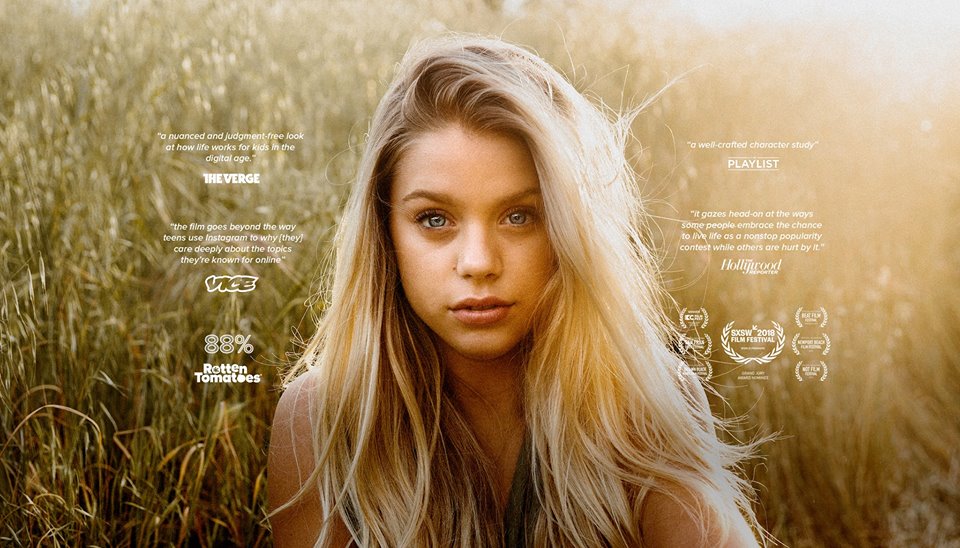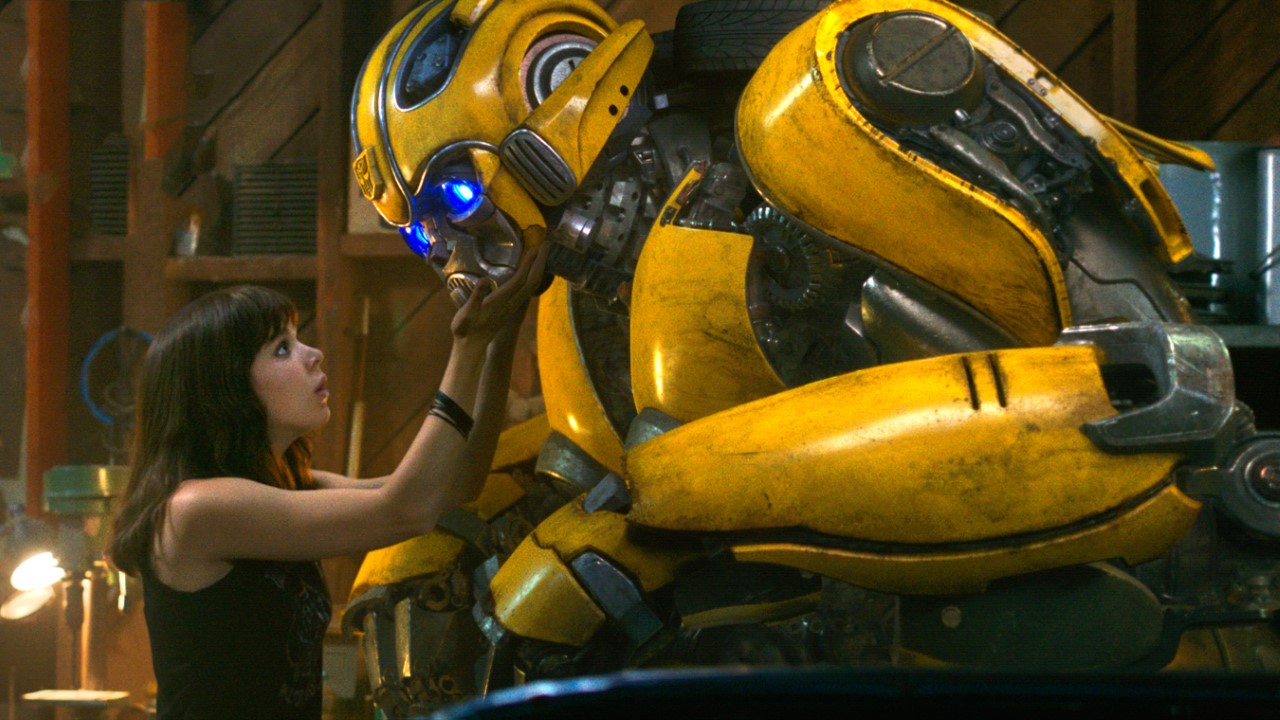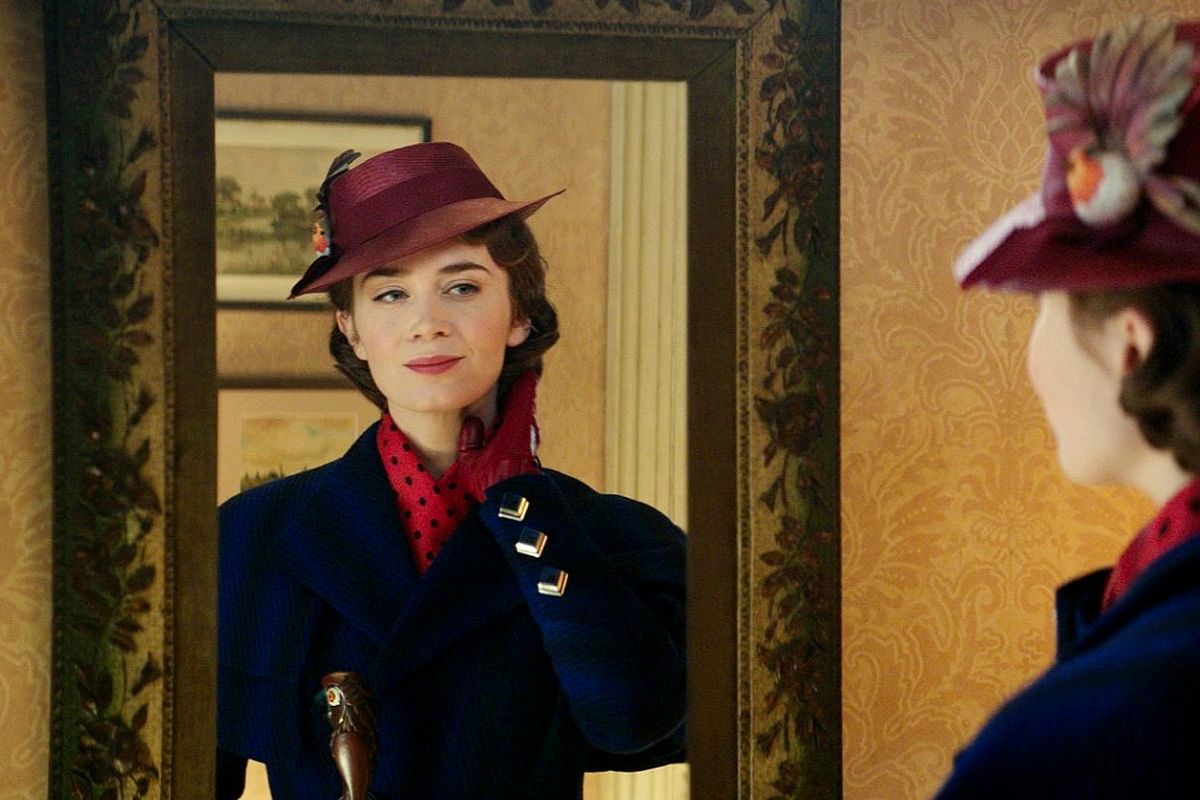
by Michael Foust | Jan 15, 2019
A new documentary shines the light on the perilous and even dangerous world of Instagram.
Not that long ago, I was young and hip. I knew about the latest trends, the latest songs, the latest gadgets. It was my life.
But the process of growing older and having children changed that. My interests also evolved.
Thus, when my 10-year-old and 7-year-old sons came home a year ago and began doing “Fortnite” dances, I asked what any middle-aged man would ask: What’s Fortnite? Google took care of that.
I had a similar reaction recently when I watched a new documentary, Social Animals. It follows three real-world young people as they post nearly everything about their lives on Instagram. Yes, I knew about Instagram. Yes, I even have a (mostly ignored) Instagram account. But I didn’t fully grasp the negative impact it is having on young people.
The 87-minute film—which is streaming on all major platforms—is an eye-opener for parents raising children in a selfie-obsessed culture.
Launched in 2010, Instagram is the preferred social media platform for today’s teens. Unlike Facebook and Twitter, which are text-heavy, Instagram is image-driven. The user takes a picture and posts it. A written message is optional. The goal is to get the most “likes.”
Social Animals tells the story of Kaylyn, a high schooler who is hyper-obsessed with her looks and has half a million followers; Emma, a teenager who had to change high schools because she was bullied on Instagram; and Humza, a New York City photographer who illegally scales tall buildings and bridges to capture the perfect Instagram image.
Their stories are told without narration or commentary, but that’s not needed. By the time the credits roll, you’re convinced that Instagram—without strict boundaries—is bad for a young person’s mental and social health.
Girls primp and pose for the picture-perfect, model-like shot.
“I look awful!” one says to the other while deleting the “bad” pictures.
In between the stories of Kaylyn, Emma and Humza, we hear from other teens who use Instagram.
“I took a shower, I blow dried my hair, I curled my hair, I did my makeup, and it took about an hour and a half just to get ready for a selfie,” one girl says.
Another girl uses a special app to erase acne in her pictures.
It’s a world where inner beauty means nothing and looks are everything. It’s a world where “likes” and “followers” determine one’s meaning in life.
Scripture tells us that “charm is deceptive,” “beauty does not last” and each person is “wonderfully made” (Proverbs 31:30, Psalm 139:14). But you wouldn’t know that by scrolling Instagram.
It was directed by Jonathan Ignatius Green, who said some parents watch it with their teens.
“I think our biggest goal is to stir a rich conversation,” Green told me. “(Social media) is powerful. It impacts our entire world—not just teenagers, but adults, too. Hopefully the takeaway is, ‘Hey, I need to take a look at this and maybe reflect on my own behaviors on social media and my own motivations for doing some of these things.’”
Social Animals includes some rough content. It’s not for everybody.
But its core message—and its implicit warnings—should be heard by today’s families.
Content warning: Social Animals is unrated; treat it like a PG-13-type film. It includes no nudity but does show girls in swimsuits. It also includes some coarse language, including some strong language.
Kutter Callaway, assistant professor of culture and theology at Fuller Seminary, wrote a discussion guide. Download it here.
For more information, Visit SocialAnimalsFilm.com
Entertainment rating: 4 out of 5 stars. Family-friendly rating: 3 out of 5 stars.

by Michael Foust | Jan 11, 2019
The PG film “A Dog’s Way Home” is mostly family-friendly, although it has a few elements that will trouble parents.
Lucas is a caring, 20-something man who will do anything to save animals in harm’s way—perhaps even risking jail.
So one day when he spots several endangered animals across the street inside a fenced-off condemned area, he and his girlfriend, Olivia, break the law by sneaking through the fence to save them.
The lot owner tells them to beat it, but not before Lucas and Olivia free the cats and escape with a dog that will be a gift to his mom, a war veteran. Dogs, Lucas says, can help veterans suffering from depression.
His mom loves the dog (they name her “Bella”) but doesn’t realize the breed is illegal under city code. That’s because Bella is classified as a pit bull—even though she doesn’t look like one.
Soon, the lot owner reports Bella to animal control, and soon after that, she is in the pound. Lucas pays a fee to get her back, even though he knows she can’t stay with him and his mom. So he takes her to Olivia’s out-of-state parents, where Bella will live until Lucas moves to a location where he can legally keep the dog.
It sounds like a good plan. That is, until Bella escapes and runs through the forest and down the highway—with the goal of traveling the 400 miles back to Lucas.
Will Bella make it?
The PG film A Dog’s Way Home opens this weekend, starring Jonah Hauer-King (Little Women, 2017) as Lucas; Alexandra Shipp (X-Men: Apocalypse) as Olivia; Ashley Judd as Lucas’ mom, Terri; and Bryce Dallas Howard (Pete’s Dragon) as the voice of Bella.
The live action-film is told from the perspective of Bella, who is raised by cats before being saved by Lucas—or as she calls him, her “person.” It is the latest in a recent series of pet-centric movies: Dogs Days (2018), Show Dogs (2018), A Dog’s Purpose (2017) and The Secret Life of Pets (2016), among them.
It is a cute, mostly family-friendly film (details below) that dog lovers especially will appreciate. The movie has two larger purposes: 1) highlight the positive role pets can play in companionship with veterans, and, 2) support the Humane Society’s “all dogs are equal” initiative, which opposes breed-specific bans and policies. City officials are attempting to impound Bella, even though she is friendly and looks nothing like a pit bull. Her kind demeanor is further underscored when she takes care of a cougar cub.
Warning: minor/moderate spoilers!
(Scale key: none, minimal, moderate, extreme)
Violence/Disturbing
Minimal/moderate. We see animal control workers catching stray pets and taking them to the pound. We hear a cougar shot and killed and then see its body; its cub is orphaned. Wolves chase Bella and a baby cougar. A man is buried under an avalanche; he survives. Wolves fight a dog. A dog is hit by a car. A homeless man dies near a river; we see his body.
Sexuality/Sensuality/Nudity
None. We hear a woman jokingly say a man is not “hot.” Additionally, parents may want to know about a couple of related issues. (See “Other Stuff You Might Want to Know”—below.)
Coarse Language
Minimal. A couple of coarse words: h-ll (1), OMG (1). One instance of “oh my gosh.” A dog is nicknamed “shaggy butt.”
Other Positive Elements
Children will enjoy watching Bella take care of a cougar cub and helping it find water and food. Perhaps that doesn’t happen in real life, but there are lessons to be learned on kindness.
Other Stuff You Might Want To Know
Two men enter the story midway through the film, and it is implied they are a gay couple. They don’t kiss, hug or even hold hands, but they ski together and live in a nice home together (Older children might ask questions; younger ones likely will not).
In the film’s final scene, Lucas and Olivia are living together. Maybe they’re married by now, but it doesn’t appear that way; he’s not wearing a ring (Most kids won’t notice, though).
Life Lessons
The primary message of A Dog’s Way Home is this: Pets need us, and we need pets (See Worldview, below). But it also provides lessons on kindness (Bella, Lucas, others), companionship (Bella, Lucas, a homeless man, veterans) and taking care of those who can’t care of themselves (Lucas, Olivia and Bella).
Worldview
A proper view of pets requires a proper view of animals: Humans are more important than animals (Genesis 1-3), and God gave mankind dominion over them (He told us to eat them, and He even crafted clothing out of animal skin).
If mankind didn’t have dominion over the animals, then there would be no such thing as pets. Pets, after all, are animals that were domesticated by humans.
But do pets need us, and do we need them? The former is certainly true. I even suspect God expects us to take care of pets. That’s because we have trained them to rely on us. It’s our responsibility to help them. In A Dog’s Way Home, Bella likely would die if Lucas didn’t help her (God takes care of animals, too: “He provides food for the cattle and for the young ravens when they call”—Psalm 104:21).
Do we need pets? For some people, the answer may be “yes.” Pets provide companionship. They provide entertainment. They provide unconditional love. They even can provide protection. Of course, they also teach responsibility.
Pets are one of God’s many blessings—as most children already know.
What Works
The relationship between Bella and her cougar friend. I could watch a movie just on that.
The scenery (The film’s setting is Colorado).
What Doesn’t
A Dog’s Way Home is a very simple movie with a thin plot. Some will find that enjoyable. Others will be bored.
Discussion Questions
- Does the Bible support the modern-day animal rights movement?
- What is our responsibility with animals? With pets?
- Why do some people need/want a pet more than others?
- Are there people who shouldn’t be given a pet?
Entertainment rating: 3 out of 5 stars. Family-friendly rating: 3.5 out of 5 stars.
Rated PG for thematic elements, some peril and language.

by Michael Foust | Dec 28, 2018
Charlie is a talented-yet-gloomy teenage girl who can’t wait to leave her mom when she turns 18.
She hasn’t always been like this. In fact, she once was a chipper kid.
But then her father died. Each weekend, they would work together on his classic car. During the week, he would cheer her on at her diving meets.
Her mom found a boyfriend after the tragedy. Charlie, though, can’t put her father’s death behind her.
“I miss you,” she says, touching his picture.
Perhaps Charlie’s yellow Volkswagen Beetle—a gift from a relative—will bring her some cheer. She loves it.
Yet there’s something different about this car. It drives great, even though it’s a clunker. It makes strange noises, as if it were alive.
Then one night in the garage, the car does the unthinkable. It transforms into a robot.
“What are you?” she asks.
Of course, we already know the answer.
The movie Bumblebee (PG-13) is now playing in theaters, starring Hailee Steinfeld (Spider-Man: Into the Spider-Verse) as Charlie, Jorge Lendeborg Jr. (Spider-Man: Homecoming) as her friend Memo, and John Cena (Ferdinand) as Agent Burns, a U.S. military official who tries to destroy Bumblebee.
Set in 1987, the film tells the story of Bumblebee, a Transformer Autobot and a “good guy” who finds refuge on Earth after his home planet of Cybertron is destroyed. His hope is to set up a base on Earth for the rest of the Autobots, who are trying to avoid the evil Decepticons. The film is a prequel to the 2007 movie Transformers.
The Autobot-Decepticon war is but a backdrop for the story of Charlie and Bumblebee, who become friends and fill voids in one another’s lives. Indeed, when Charlie cries while thinking about her father, Bumblebee hugs her. Charlie, in turn, tries repairing Bumblebee, who was injured in a battle and has lost the ability to speak.
Warning: minor/moderate spoilers!
(Scale key: none, minimal, moderate, extreme)
Violence/Disturbing
Moderate/extreme. The violence in Bumblebee is mostly bloodless, but it nevertheless has the knockdown, dragout fights between robots that made the Transformers series popular. Some of the battles end in death. The film begins with a huge battle on the planet Cybertron involving punches and laser guns. The scene then switches to Earth, where we see Bumblebee being chased by soldiers, who shoot him with guns that don’t harm him. Bumblebee then battles a Decepticon. We see Bumblebee held over a cliff and dropped; the battle causes him to lose his speech. We also see a Transformer split in half, execution style. Decepticons twice shoot humans; they turn into a slimy goo. A Decepticon talks about killing Bumblebee and another human. The film ends with a massive battle between Bumblebee and two Decepticons.
Sexuality/Sensuality/Nudity
Minimal. A teen boy takes off his shirt at a theme park and is ogled by the girls. Later, another boy takes his shirt off in a car. A man and a woman get into an argument; she says he tried sleeping with her sister. A married couple share a brief kiss.
Coarse Language
Moderate. About 29 words: OMG (9), h-ll (8), d–n (5), misuse of “God” (3), s–t (2), a– (1), misuse of “Jesus” (1).
Other Stuff You Might Want To Know
Charlie is bullied several times in the film; once, the bullying involves a joke about her deceased father. “You should have your dad buy a better (car). Oh, wait,” another girl tells her, fully aware that Charlie’s father is dead. Charlie, Memo and Bumblebee later roll the girl’s yard with toilet paper. They egg her car, too. We see a child vomit.
Life Lessons
We learn lessons on mercy (Bumblebee), grief (Charlie), the importance of parents (Charlie and her family), companionship (Bumblebee and Charlie) and peer pressure (Charlie).
Worldview/Application
Bumblebee may be a movie about robotic aliens, but the film’s dominant theme is recovering from grief. Charlie misses her father. Bumblebee misses his home. Together, they form a great friendship.
For some moviegoers, the film may spark a sense of gratitude and love for their family. For others, it may lead them to reach out to those who are hurting.
“Bear one another’s burdens, and so fulfill the law of Christ,” Paul wrote in Galatians 6:2. Bumblebee doesn’t reference Scripture, but it’s easy to make that jump with family members or friends in a discussion after the film.
What Works
It’s a Transformers movie where the story dominates and the battles are secondary. I liked it. The movie features ’80s music, too, which will attract adults (like me) who grew up during that era. Also, John Cena is impressive as a tough guy. Steinfeld is great, too.
What Doesn’t
Paramount is trying to attract a new audience to the Transformers films—perhaps even more families. Nethertheless, it contains a tad too much adult content for many parents.
Discussion Questions
- Why was Charlie’s mother able to move on with her life but Charlie unable to do so?
- Why did Charlie and Bumblebee have in common? Why did they make for good friends?
- What did the movie teach you about bullying and the harm it can cause?
- Who (if anyone) was at fault for the broken family relationship—Charlie or her mom? What was needed to repair it?
Entertainment rating: 3.5 out of 5 stars. Family-friendly rating: 3 out of 5 stars.
Rated PG-13 for sequences of sci-fi action violence.
Photo credit: Paramount

by Michael Foust | Dec 21, 2018
The Disney musical Mary Poppins Returns (PG) opened in theaters this week, more than five decades after the Oscar-winning original was released.
Michael Banks is a young widower and father of three who is facing eviction from the London home he inherited from his father.
It seems the struggling Banks unwisely used his house as collateral on a loan, and he’s now three payments behind.
But that’s OK. His father owned shares in the local bank that can be redeemed for enough cash to pay down the loan. If only he could find the paperwork.
He searched the attic. He combed the bookshelves. He even asked the bank if they had proof of the transaction. Everything came up empty.
With an eviction pending and the children still mourning the death of their mom, the Banks family sure could use some cheer.
Then an old friend drops from the sky underneath a big umbrella. Her name is Mary Poppins, the woman who served as a nanny for Michael and his sister Jane when they were children. She wants to take care of Michael’s children—Anabel, John and Georgie—during the family crisis. Who knows? She even may help the family keep their home.
The Disney musical Mary Poppins Returns (PG) opened in theaters this week, more than five decades after the Oscar-winning original was released. Just like the 1964 version, the sequel takes place on Cherry Street Lane in London. This time, though, the setting is the Great Depression—the “Great Slump” as they called it in the U.K.—and families across the city are barely making ends meet.
The movie stars Emily Blunt (A Quiet Place) as Mary Poppins, composer Lin-Manuel Miranda (who wrote the music for Moana) as the lamplighter Jack, and Ben Whishaw (the voice of the bear in Paddington) as Michael Banks.
Blunt is the perfect fit for the role that Julie Andrews popularized. The movie may not be as good as the original—what is?—but it’s still very, very good.
It has the same feel, the same look, the same pace.
Like the original, it features goofy songs and quirky scenes (my favorite: the room where everyone is upside down). Like the original, it showcases a mixture of animation and live action (my favorite: Mary Poppins and the kids “enter” a painted scene on a family bowl, interacting with the animals and characters). Like the original, it has catchy, toe-tapping songs (Trip a Little Light Fantastic is a good one).
From beginning to end, Mary Poppins Returns almost seems like a movie made in the ‘60s.
Warning: minor/moderate spoilers!
(Scale key: none, minimal, moderate, extreme)
Violence/Disturbing
Minimal. Georgie is kidnapped by cartoon character thieves in a truck. A chase scene ensues, and his siblings are able to get him back. We also hear the children discuss how much they miss their mother.
Sexuality/Sensuality/Nudity
None. We hear a song that mentions a “birthday suit.”
Coarse Language
None. We hear the British word “bloody.”
Life Lessons
The lessons in Mary Poppins are ones we all can learn: live life with joy, slow down, learn to laugh more, recapture the simple pleasures of your younger years.
Worldview
Just like the 1964 film, Mary Poppins Returns doesn’t tell us where she gets her powers.
“One thing you should know about Mary Poppins,” one person says when her “magical” abilities are questioned. “She never explains anything.”
But the word “magic”—a concept that repels some moviegoers—is never used. Perhaps that’s because the story of Mary Poppins isn’t about magic. It’s about childhood.
The 1964 and the 2018 films are a celebration of the things that make childhood great— imagination, creativity, wonder and laughter. All are gifts from a creative God.
The films are a recreation of what children might do if they had the “power” to act out their imaginary worlds. It’s a joy to watch (and hear).
The other day, my youngest son and I discussed what it would be like if zoo animals could buy groceries at the local store—you know, if they had money and human brains. If you set his story to music and added a few goofy words, I bet it would sound a bit like a song in Mary Poppins Returns.
Sponsors
For children, Subway likely is the most well-known partner.
What Works
Mostly everything. If every sequel to a classic was this true to the original, I’d want more of them. Some moviegoers will say the music isn’t as catchy as the 1964 soundtrack—and they’re likely right—but I wonder if our attachment to that classic film is based on nostalgia. For example, will the moviegoer in 50 years automatically prefer the original music? That’s a good question.
What Doesn’t
I’m being picky, but it would have been nice to have another “G” rating on a Mary Poppins film. The chase scene is what warranted the “PG.”
Discussion Questions
- Why is imagination and laughter so important in a child’s life? In our lives?
- Why do we forget the simple pleasures in life as we age?
- What is your view on the “magic in movies” debate? Does Mary Poppins Returns have magic?
Entertainment rating: 3.5 out of 5 stars. Family-friendly rating: 4.5 out of 5 stars.
Rated PG for some mild thematic elements and brief action.

by Michael Foust | Dec 21, 2018
The DC Comics film Aquaman (PG-13) opens this weekend, telling the story of a superhero who can breathe water—and whip the bad guys.
Arthur is a tall, muscular and tough young man who has—it’s easy to say—a unique background.
His father was a lighthouse keeper, and his mother was Atlanna, the Queen of the underwater world Atlantis. They met one stormy night when she washed up on shore, nearly dead, and was nursed back to health. Shortly thereafter, they married, and soon after that, Arthur was born.
Arthur is only half-Atlantean, but he nevertheless has the other-worldly abilities of his mother’s species. He can breathe water. He can see in the dark. And he can dart through the ocean faster than a speeding dolphin. People call him “the Aquaman.”
What Arthur no longer has, though, is a mother. Atlanna left him and his father long ago, fearful that the war-driven people of Atlantis would kill Arthur, a “half-breed.” He hasn’t seen her since.
Although Arthur has lived much of his life on land, he now is being called back to the sea. That’s because his half-brother—Orm—is trying to unite the seven kingdoms of the sea and start a war with the people of the land (That’s us). The goal: destroy humanity and prove that the creatures of the sea are superior.
Can Arthur stop them?
The DC Comics film Aquaman (PG-13) opens this weekend, starring Jason Momoa (Justice League) as Arthur/Aquaman, Patrick Wilson (The Phantom of the Opera) as Orm, and Amber Heard (Justice League) as Mera, Arthur’s romantic interest and a former citizen of Atlantis.
The film follows Arthur as he tries to take his rightful place as the king of Atlantis from Orm, who is younger. In sharp contrast to Orm—who wants only war—Arthur is striving for peace. As his mother once predicted, “He could unite our worlds one day.”
Aquaman has plenty of rough edges (more on that below) but is entertaining enough for a superhero flick. That said, the first half of the movie and its emphasis on backstory is more compelling than the last half of the film, in which the story gets overshadowed by mythical minutia and a CGI-battle-fest.
Warning: minor/moderate spoilers!
(Scale key: none, minimal, moderate, extreme)
Violence/Disturbing
Extreme. The film begins with Aquaman saving a submarine from underwater pirates and beating nearly everyone on the ship to a pulp. They try to kill him with guns, but he’s immune to bullets. We see a tidal wave nearly kill an elderly man. We see destruction on the beaches. We watch Arthur battle his brother in a gruesome fight that would make MMA fans squirm. Scary, alien-like sea creatures attack Arthur and Mera at night. Multiple times during the film, we see people and creatures speared. The underwater battle scene at the end is ultra-violent and long—too long.
Sexuality/Sensuality/Nudity
Minimal/moderate. Arthur’s parents exchange a kiss, as does another couple later in the film. We see his pregnant mom lying in bed, with her hand on her belly. Mera’s form-fitting outfit (which she wears throughout the film) is low cut.
Coarse Language
Moderate. About 18 coarse words: h-ll (5), s–t (3), a– (3), d–n (2), b—ard (2) SOB (1), d–k (1). b–ch (1).
Other Positive Elements
The film has several touching family-centric scenes. Arthur’s tearful mother leaves him as a toddler, saying it’s “the only way to save him.” Arthur/Aquaman shows mercy to several victims, refusing to kill them when he has the upper hand. Arthur and his father maintain a relationship when he’s an adult, and we see them hug.
Other Stuff You Might Want To Know
Aquaman curses. He drinks (a lot). And in between, he beats people up. In fact, he wants to fight. He reminds me of the old WWE pro wrestler “Stone Cold” Steve Austin (That’s not a compliment). He’s a different, grittier kind of superhero. Some fans will love the character. And, at times, the shtick indeed is hilarious. But I prefer more wholesome superheroes. Still, he has plenty of positive qualities.
Life Lessons
The movie gives us lessons on selflessness (Arthur’s mother), self-sacrifice (Mera, Arthur, others), courage (Arthur), loyalty (Mera), humility (Arthur) and the bond within a family (Arthur and his parents).
Worldview/Application
Like all DC and Marvel films, the story of Aquaman involves myths and characters with God-like qualities.
Still, there are plenty of positive characteristics in the film. As Lord of the Rings creator J.R.R. Tolkien once wrote: “Inevitably the myths woven by us, though they contain error, will also reflect a splintered fragment of the true light.”
Aquaman is a tough superhero who (mostly) practices mercy. And when he doesn’t show mercy, he later regrets it.
He’s also humble, as we see when he initially rejects calls to become king. He wants justice for the world. He opposes evil. Perhaps that’s why our society likes superhero movies so much. Deep down, we’re looking for a hero to defeat evil and save us. We’re looking for a savior. Thankfully, we already have one. We can read about Him in the pages of Scripture.
What Works
The underwater scenes are beautiful and impressive. Perhaps the most amazing element: the way each character’s hair floats in the water as they talk to one another and interact.
What Doesn’t
Superhero movies often are heavy on CGI and light on story. In the back half of the film, this one is exactly that.
Discussion Questions
- List three selfless acts in the movie. List three acts that reflected mercy.
- Should Arthur’s mother have left him?
- Why was Arthur hesitant to lead his people?
- Why are moviegoers so enamored with superheroes? Is it only for entertainment?
Entertainment rating: 3 out of 5 stars. Family-friendly rating: 2.5 out of 5 stars.
Rated PG-13 for sequences of sci-fi violence and action, and for some language.




